Outside of foldables, many people would argue that the smartphone market has stagnated, but this relative lack of innovation is great news if you’re shopping for a more affordable phone.
In particular, mid-range handsets (which Tech Advisor defines as costing between £300/$300 and £700/$700 when bought outright) have seen a big leap forward in recent years. In 2025, the best mid-range smartphones are closer than ever to their flagship counterparts.
PROMOTION
FREE Samsung A16 with Silver Unlimited

Activate with Straight Talk’s Silver Unlimited plan (data/talk/text +10GB hotspot) for only $45/mo and get a FREE Samsung A16 5G for free! This offer can also be activated with Silver Unlimited, Gold Unlimited or Platinum Unlimited plans.
But for every great mid-range phone, there’s at least one other that’s not worth your time. The goal of this article is to help you find the handsets that suit you best. We review dozens of mid-range handsets each and every year, but only the 10 very best make it into this list.
Everything listed here is an Android phone. Unless you buy a reduced model, the only mid-range iPhone which Apple makes is the iPhone 16e, but we didn’t deem it good enough for inclusion here. In our detailed buying advice at the bottom of the page, you’ll find an overview of other devices that didn’t make the cut but you might still be interested in.
Amazon Prime Day October mid-range phone deals
- Samsung Galaxy S25 – £685.95 (14% off)
- Google Pixel 9a – £405.95 (19% off)
- Xiaomi 15 – £659 (£240 off)
- Motorola Edge 60 Pro – £403.99 (42% off)
- Apple iPhone 16e – £544 (£55 off)
Amazon’s Big Deal Days (aka Prime Day for October) takes place on 7-8 October and we’ll be tracking the best deals on mid-range phones above, but there are already some great deals available that we’ve found and you don’t need to be a Prime Member to buy them.
All 10 phones below are available in the UK, but not all of them are sold in the US – we’ll indicate where that’s the case. On a different budget? See our dedicated guides to the budget phones and best phones overall.
Best mid-range phone reviews
1. Google Pixel 9a – Best Overall
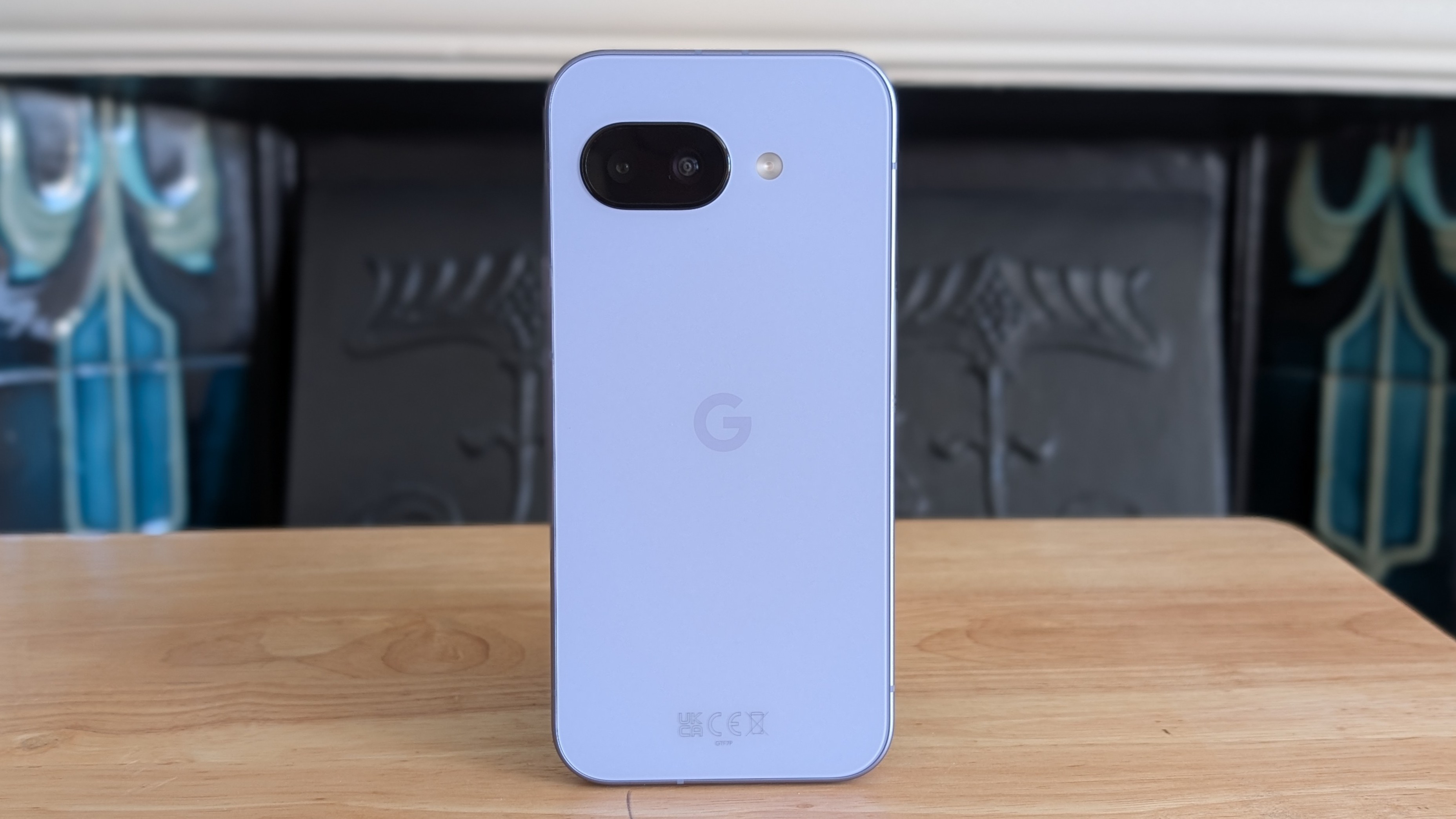
Pros
- Attractive display
- Strong main and selfie cameras
- Excellent software
- Seven years of updates
Cons
- No telephoto camera
- Slow charging
- Polarising design
The Pixel 9a is far from being a perfect phone, but it is very easy to recommend. If you want a no-frills mid-range phone experience that will serve you well for many years, this is it.
That’s not to say it doesn’t have any standout features, though. The 6.3-inch P-OLED display is excellent, especially with that silky-smooth 120Hz refresh. Opting for the same Tensor G4 chipset as the flagship Pixel 9 phones means performance is excellent too.
And in the 48Mp main lens, you’ve got a superb camera for point-and-shoot photography. The 13Mp selfie sensor is impressive too, while the 13Mp ultrawide can hold its own. It’s just a shame there’s no telephoto lens for proper zoom photography.
But the Pixel 9a is arguably even more impressive on the software side. Slick Android 15 software is backed by a class-leading seven years of updates and useful AI features, even if you don’t get the full set here. Pixel phones are also first in line to get Android 16 and future major versions when they arrive.
While battery life is decent, slow 23W wired charging is probably the biggest disappointment, while the nondescript design won’t be for everyone. But if you just want a solid mid-range phone that handles almost all the fundamentals well, the Pixel 9a is the handset for you.
Who should buy the Google Pixel 9a?
Anyone looking for a no-fuss mid-range phone that gets all the basics right, or anyone who doesn’t want to compromise on photos from the main camera.
Google Pixel 9a: Further considerations
Look elsewhere if you care about zoom photography or fast charging.
Read our full Google Pixel 9a review
2. Nothing Phone (3a) – Best Value
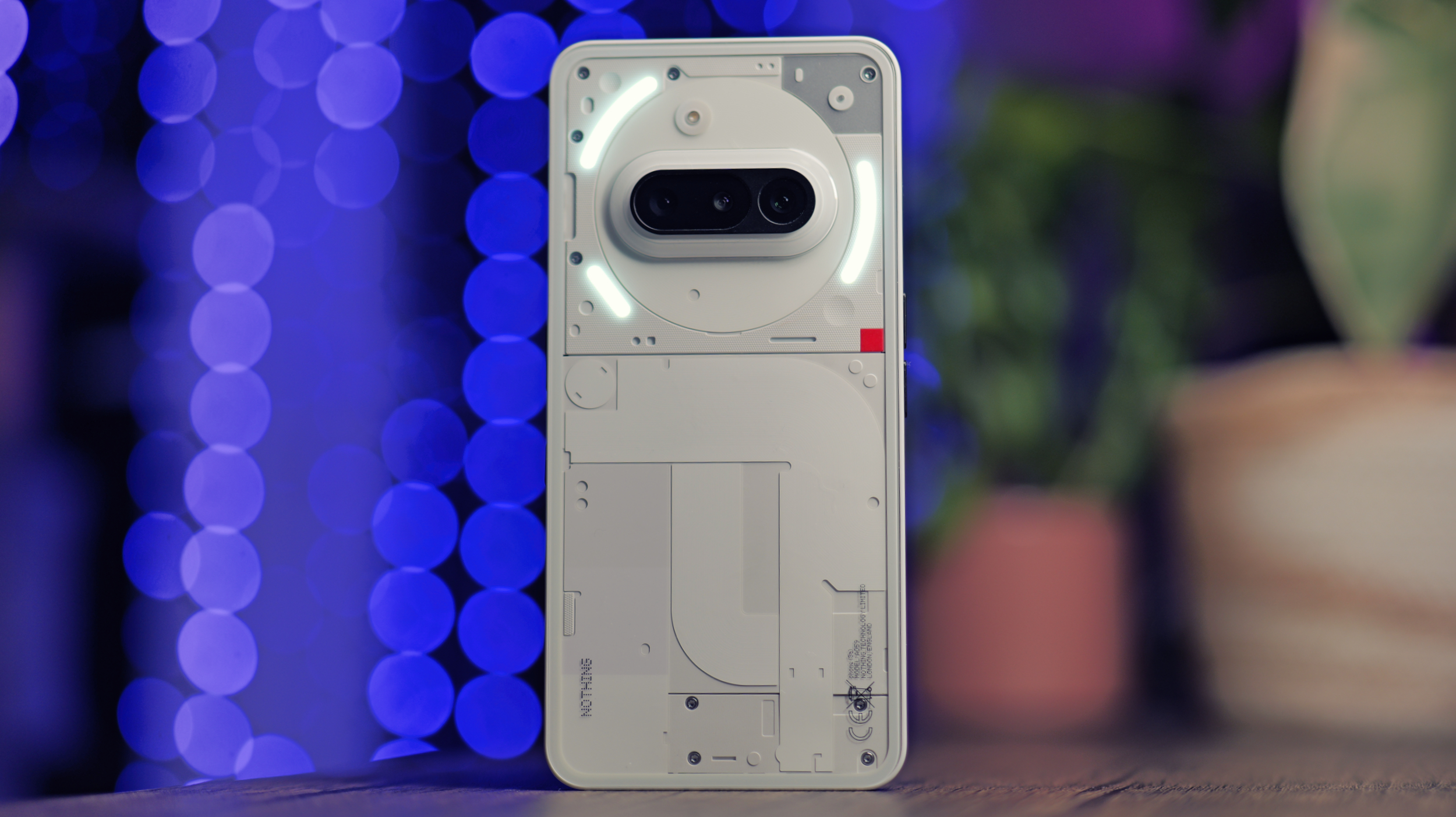
Pros
- Incredibly stylish design
- Affordable price point
- Slick and speedy software
- Great battery life
Cons
- Ultrawide camera isn’t great
- No charger in the box
With a starting price of just £329/$379, the Nothing Phone (3a) is only just expensive enough to be included here. However, provided you don’t need top-tier cameras, it offers everything most people are looking for in a phone.
Nothing’s signature design, with a semi-transparent back and customisable ‘Glyph’ lights, means the Phone (3a) is sure to turn heads. But it’s the excellent Snapdragon 7s Gen 3 performance, superb 6.77-inch 120Hz OLED display and superb battery life (from the 5000mAh cell) that elevate the device from good to truly excellent.
Nothing’s take on Android is another highlight, with a new Essential Key that should get more useful over time, plus a full six years of software support.
Cameras are the main compromise, with issues in low-light and a disappointing ultrawide lens. But for everything you’re getting, the Nothing Phone (3a) is a superb phone for the money.
Who should buy the Nothing Phone (3a)?
Anyone who wants a great mid-range phone for a fraction of the price of many rivals, or anyone who likes the idea of customisable lights on the back of their device.
Nothing Phone (3a): Further considerations
Look elsewhere if you care about a great all-around camera experience or want a compact phone.
Read our full Nothing Phone (3a) review
3. Xiaomi 15T Pro – Best Hardware
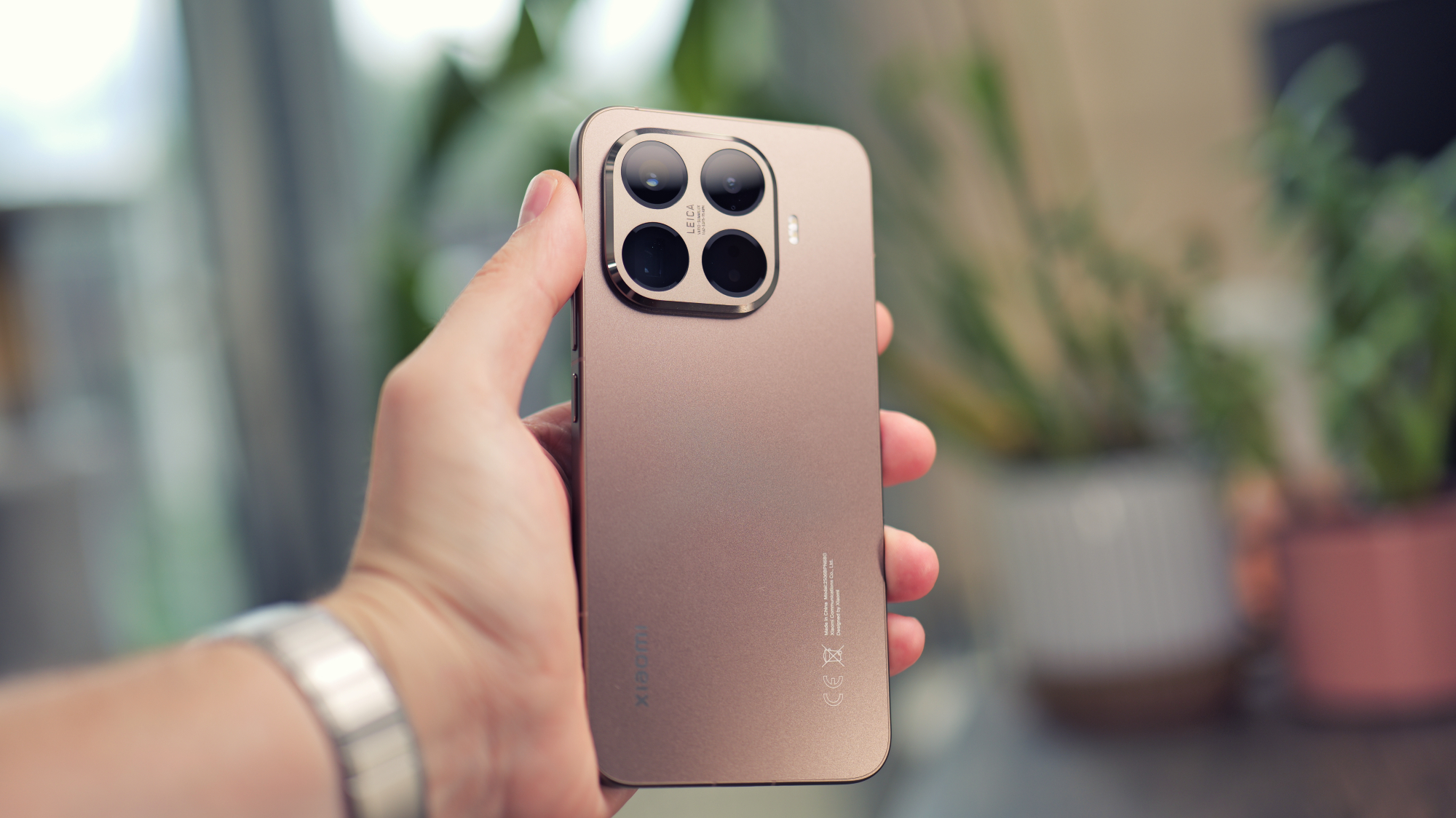
Pros
- Stylish design
- Massive screen
- Powerful performance
- Long battery life and speedy charging
- Solid camera system
Cons
- Ultrawide camera could be better
- HyperOS is a little divisive
With a starting price of £699 at launch, the Xiaomi 15T Pro sits right at the top of what we’d consider to be a mid-range phone. However, it’s the one phone in this round-up that feels almost indistinguishable from a flagship.
Everything about the 15T Pro’s hardware is top-tier, from a gorgeous 6.83-inch AMOLED display to superb performance from the MediaTek Dimensity 9400+ chipset. A strong camera system includes an impressive new periscope telephoto, while support for 4K 120fps is a big upgrade for video.
With great battery life from the 5500mAh cell and rapid 90W charging, plus a premium, flagship-level design, there’s very little to dislike here.
In fact, aside from an underwhelming ultrawide lens, the only real issue is Xiaomi’s HyperOS Android, which isn’t for everyone.
The Xiaomi 15T Pro isn’t much cheaper than many flagships, but it does offer the complete phone hardware of any mid-range phone right now.
Who should buy the Xiaomi 15T Pro?
Anyone who wants a mid-range phone with flagship-level performance or top-tier cameras (minus the ultrawide).
Xiaomi 15T Pro: Further considerations
The regular Xiaomi 15T starts at £549 and has plenty in common with the Pro. However, look to other brands if you value a clean software experience or are based in the US.
Read our full Xiaomi 15T Pro review
4. Poco F7 Pro – Best Performance
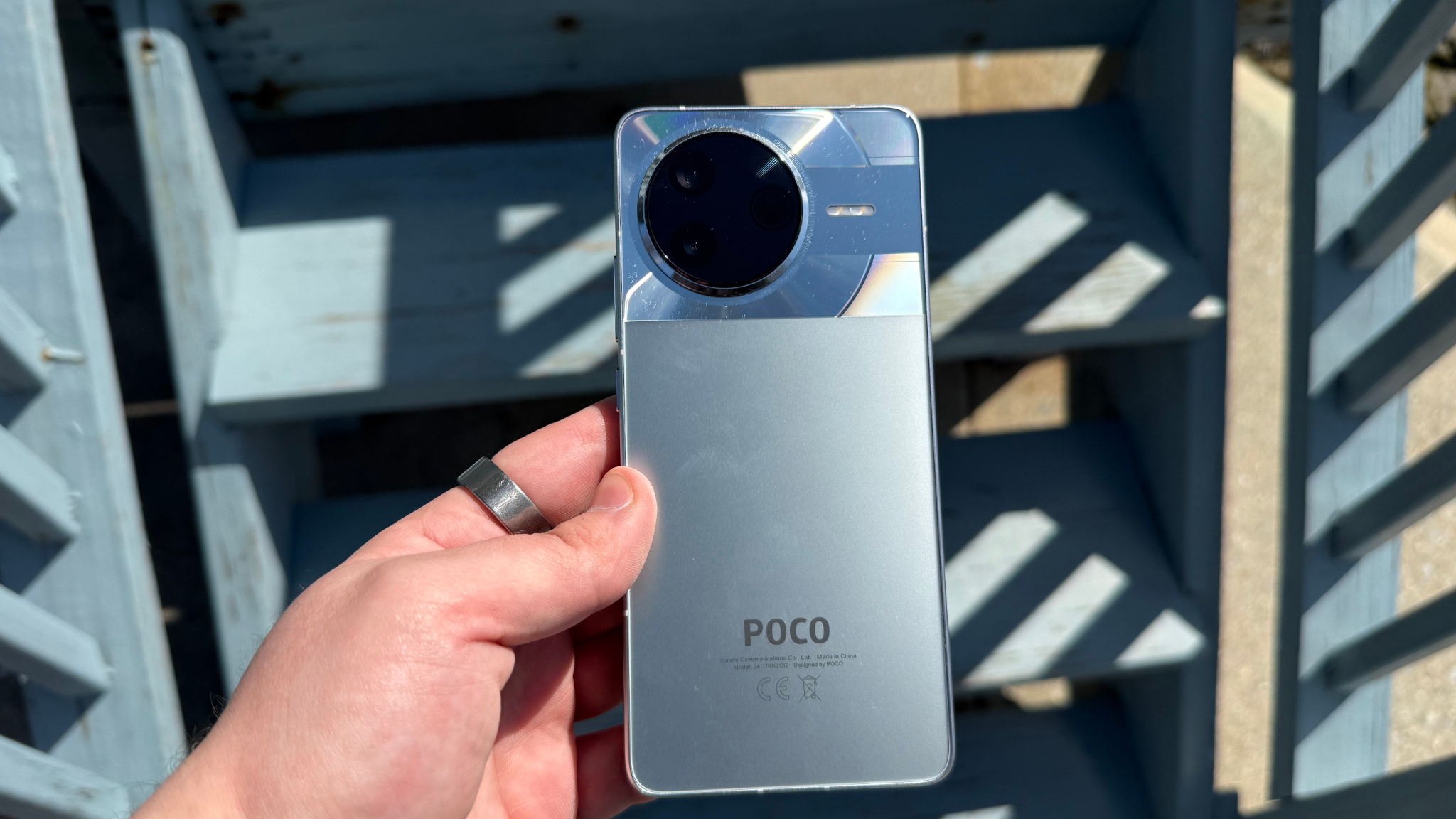
Pros
- Superb performance
- Stunning display
- Strong battery life
- Premium build
Cons
- Ultrawide camera is just okay
- Some pre-installed bloatware
- Display isn’t quite bright enough
- Not available in the US
From a hardware perspective, the Poco F7 Pro is an amazing achievement.
It packs a true flagship-level chipset in the Snapdragon 8 Gen 3, which delivers predictably superb performance in basically any scenario. The large 120Hz OLED is a joy to use, even if more brightness would be nice, while battery life from the large 6000mAh cell is excellent. You even get a premium build, something which is often sacrificed on mid-range phones.
The cameras are generally impressive, too – especially that 50Mp main lens. Sadly, the 8Mp ultrawide is a big step down in quality,
Bigger compromises appear on the software side, with annoying extra pre-installed apps and only four years of software support (as opposed to six on many mid-rangers).
But these are easy to overlook when you see everything else you’re getting for your money. Poco also has a more premium F7 Ultra, but the F7 Pro is a better choice for more people. If you’re looking for something more affordable, consider the regular Poco F7.
Who should buy the Poco F7 Pro?
Anyone who wants the absolute best performance on a mid-range phone or excellent battery life.
Poco F7 Pro: Further considerations
Look elsewhere if you value an intuitive software experience or are based in the US.
Read our full Xiaomi Poco F7 Pro review
5. OnePlus 13R – Best Battery Life
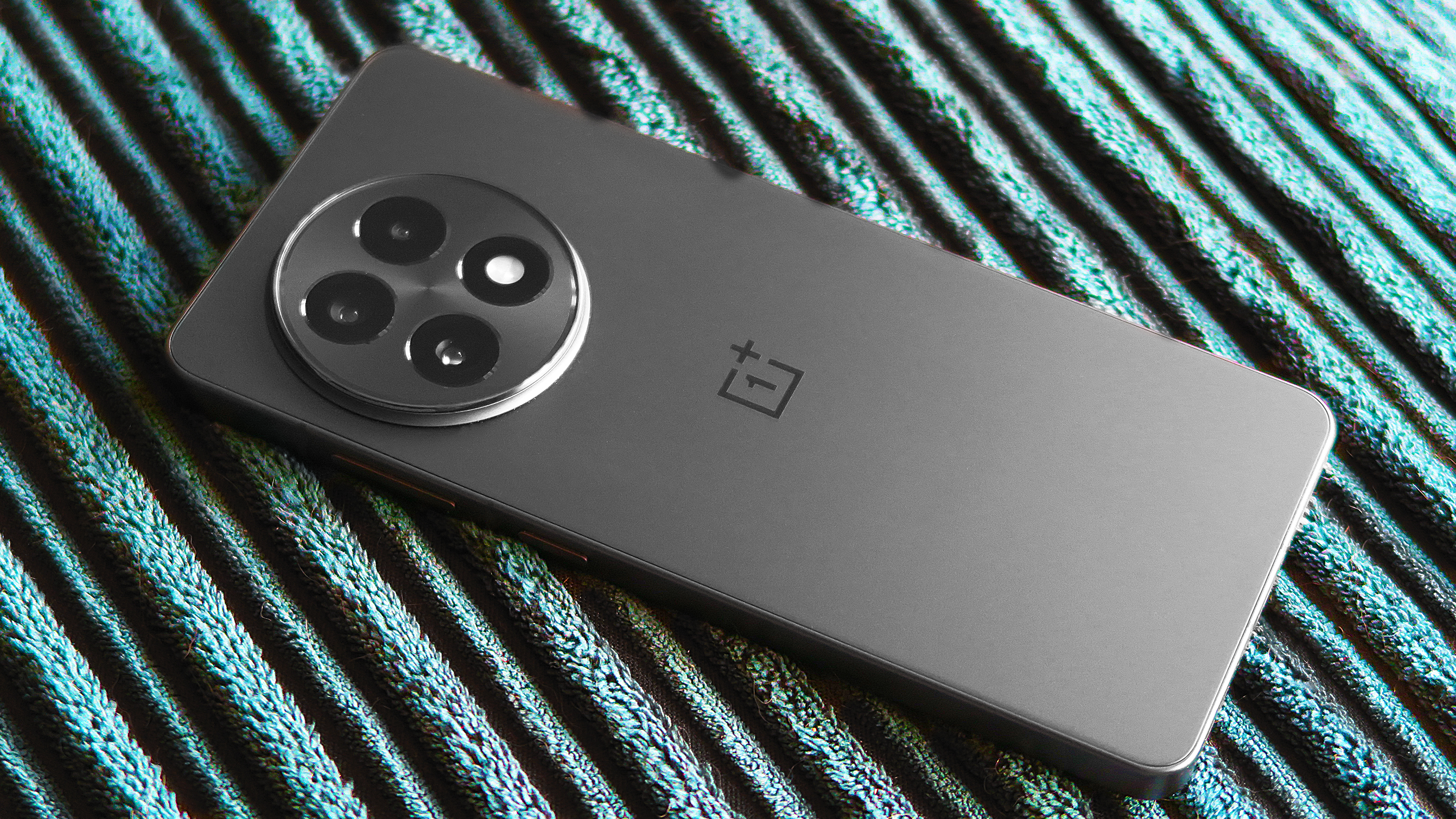
Pros
- Six years of software
- Great user experience with nice AI additions
- Brilliant performance
- Solid battery life
- Super-fast charging
Cons
- Cameras need fine tuning
- No wireless charging
- Magnetic accessories only work with case
- Not available in the US
Given it launched alongside the flagship OnePlus 13, it’s easy to overlook the cheaper 13R. But this is a great mid-range phone in its own right.
It offers almost everything most people are looking for in a mid-range phone, namely great performance, superb battery life and slick software that cleverly deploys AI to enhance the user experience. And at this price point, OnePlus’ commitment to six years of software updates is the best around.
Cameras are the main shortcoming – despite some notable improvements compared to the OnePlus 12R, it’s a step down from the best at this price point. You’ll also have to make do without wireless charging, with the MagSafe-style accessories requiring a separate case.
However, provided user experience is your top priority and you don’t mind sacrificing some camera performance to get there, you can’t go wrong with the 13R.
Who should buy the OnePlus 13R?
Anyone who wants the absolute best performance on a mid-range phone or excellent battery life.
OnePlus 13R: Further considerations
Look elsewhere if you want great cameras or are based in the US.
Read our full OnePlus 13R review
6. Motorola Edge 60 Pro – Best Design
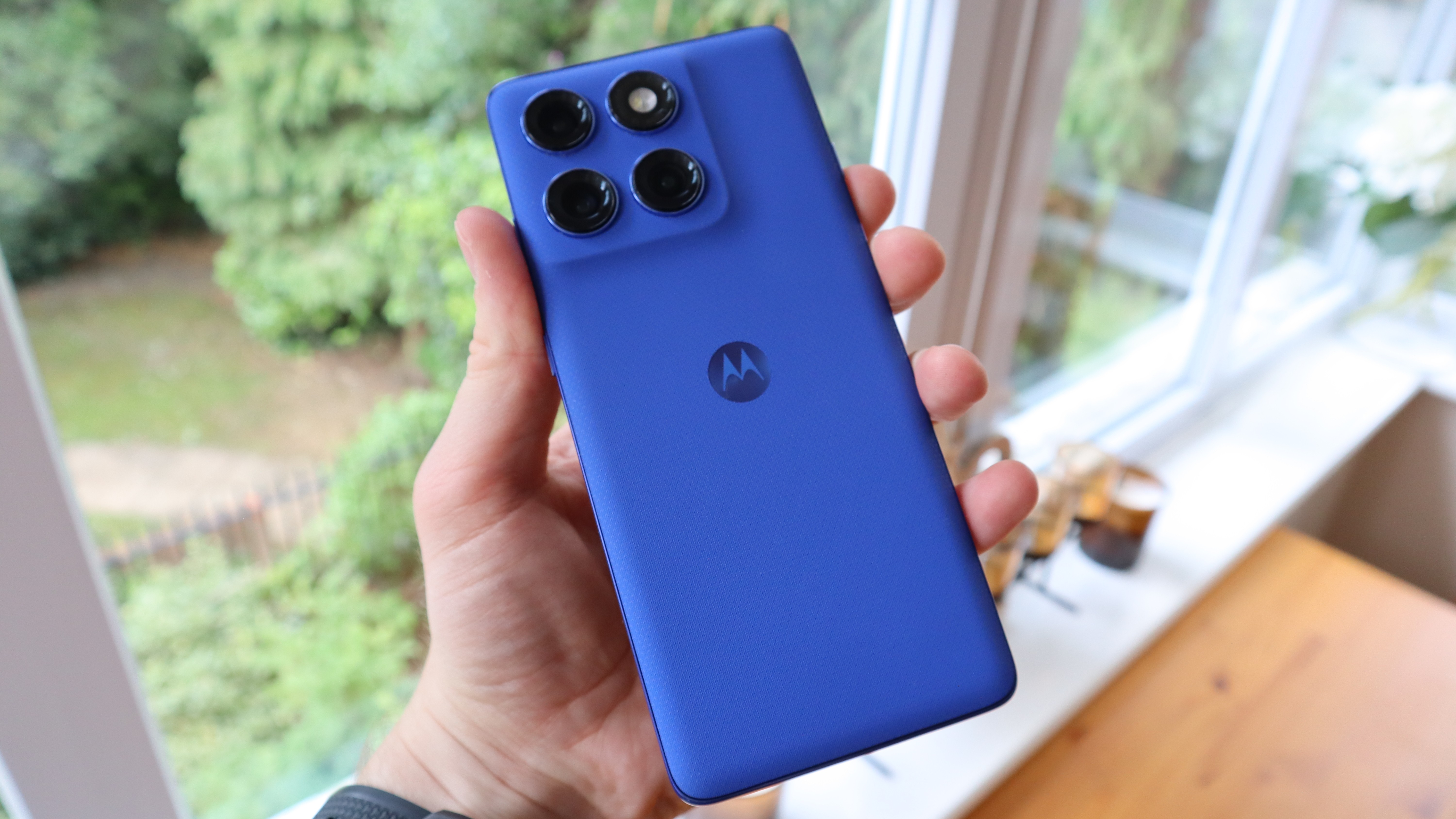
Pros
- Stand-out design
- Easy-to-use Android software
- Solid battery life
- Excellent screen
Cons
- Middling software support
- Moto AI needs work
- Charging speed downgraded
- Not available in the US
If a good-looking phone is your top priority, look no further than the Motorola Edge 60 Pro.
Its gorgeous range of textured finishes and bright Pantone-inspired colours allows you to add a splash of personality without sacrificing grip. With impressive durability credentials too, you can’t get much better than the Edge 60 Pro when it comes to design.
There’s a lot to like elsewhere, too, with strong battery life from the sizeable 6000mAh cell and a gorgeous 6.7-inch pOLED screen. MediaTek’s Dimensity 8350 chipset delivers strong all-around performance, while the rear cameras perform very well when the light is good.
While the general software experience is good, there are drawbacks. Motorola’s implementation of AI features still needs work, while the company’s commitment of just three years of OS upgrades and an extra year of security patches is underwhelming when the cheaper Pixel 9a gets seven years of both.
However, very few phones can match the Edge 60 Pro in the design stakes, making it an impressive mid-range option.
Who should buy the Motorola Edge 60 Pro?
Anyone who wants the best-looking mid-range phone you can buy right now, plus a close to ‘stock’ Android software experience.
Motorola Edge 60 Pro: Further considerations
Look elsewhere if you want long software support or are based in the US.
Read our full Motorola Edge 60 Pro review
7. Samsung Galaxy A56 5G – Best for AI
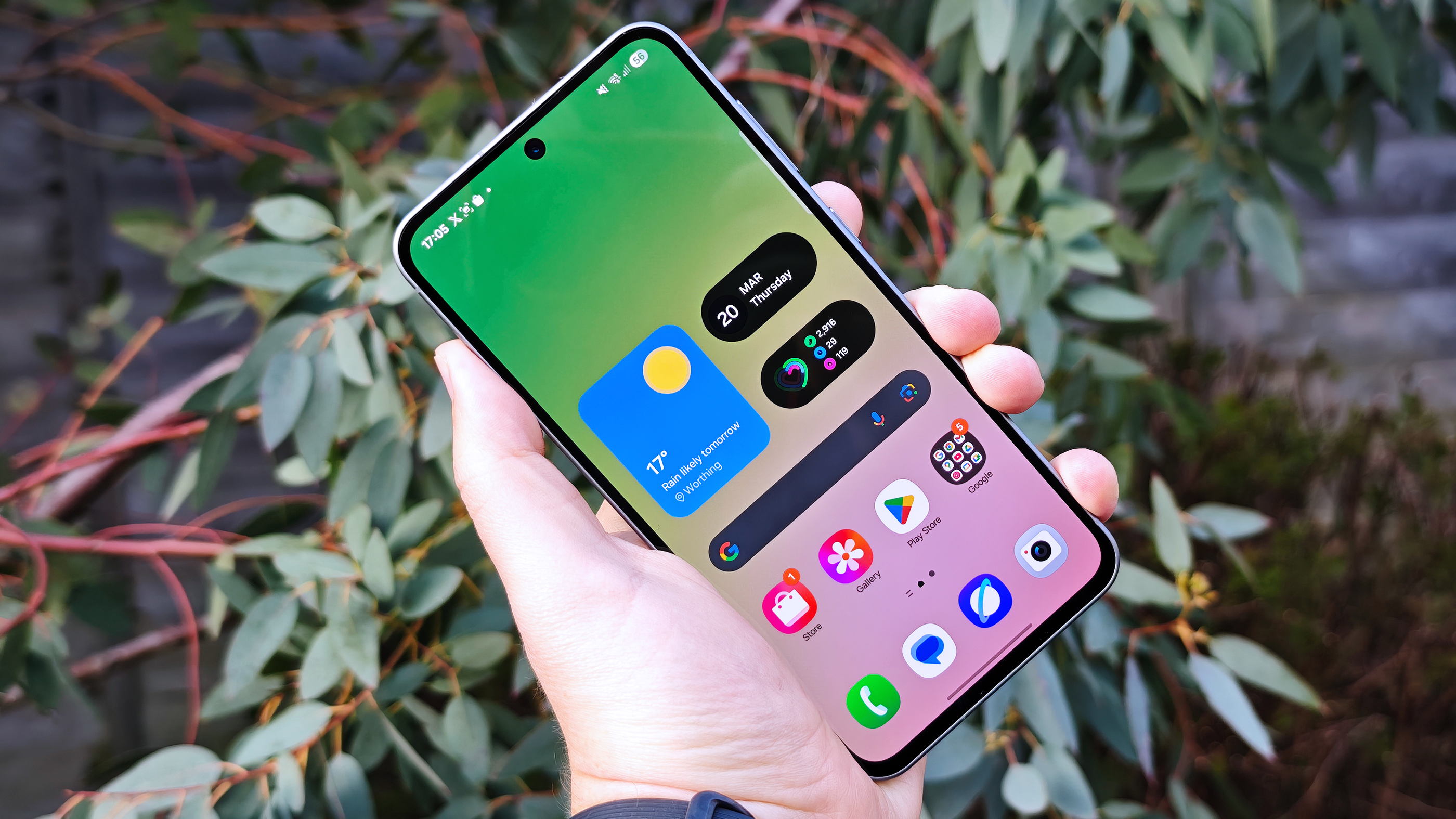
Pros
- Thin and light design
- Strong software experience
- Useful AI features
- Attractive display
Cons
- Disappointing secondary cameras
- Not great for gaming
- Lacklustre speakers
In many ways, the Galaxy A56 is a Galaxy S25+ at a mid-range price.
It offers a premium design, an attractive display and solid everyday performance, making it an appealing choice. And in One UI 7, you get one of the very best software experiences, complete with genuinely useful AI features. Samsung also offers an impressive six years of both OS and security updates.
However, performance for anything more demanding can prove problematic, while a decent main rear camera is let down by the supporting lenses. You’re also better off connecting Bluetooth headphones than relying on the lacklustre speakers.
The Galaxy A56 offers a lot for its mid-range price, but it’s not brilliant value. It’s a reliable choice, but you might find one of the phones above to be a better choice.
Who should buy the Samsung Galaxy A56?
Anyone who regularly uses AI features on their phone, or who values the familiarity and long software support of a Samsung.
Samsung Galaxy A56: Further considerations
Look elsewhere if you want strong supporting cameras or top-tier performance.
Read our full Samsung Galaxy A56 review
8. Honor 400 – Best Main Camera
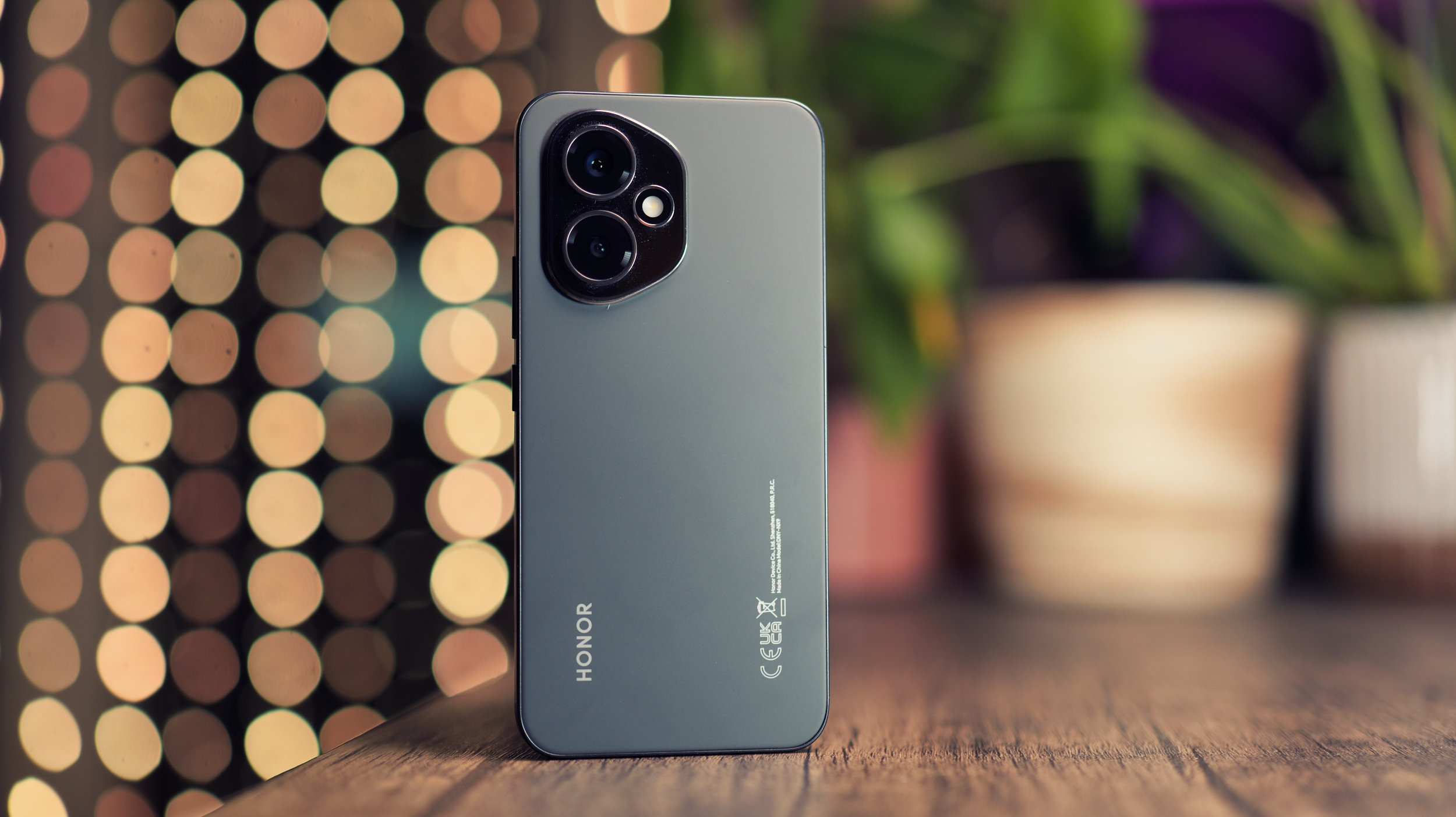
Pros
- Premium look and feel
- Great cameras
- Excellent battery life
- Nifty AI features
- Long software support
Cons
- Slower charging than its predecessor
- Not the best for gaming
- Not available in the US
The regular 400 is the Honor phone that we’d recommend to most people. A more premium version in the 400 Pro is available, but for £300 less, its regular sibling is excellent value for money. If only it were available in the US!
Cameras are undoubtedly the highlight here, with impressive performance from the 200Mp main sensor in particular, including a range of convincing Studio Harcourt portrait effects. And while there’s no telephoto sensor, the capable ultrawide and selfie lenses do a good job of supporting it.
The sleek, flagship-esque design is another highlight, while the sizeable 5300mAh cell delivers strong battery life. With an attractive 6.55-inch AMOLED display, an AI-infused software experience and a full six years of OS and security updates, the Honor 400 has a lot going for it.
A charging speed downgrade compared to the Honor 200 and unreliable gaming performance from the Snapdragon 8 Gen 3 chipset are the main things that count against it, while not everyone will enjoy Honor’s MagicOS user interface.
But considering how little you’re paying and how much you’re getting here, the Honor 400 is a genuine mid-range contender.
Who should buy the Honor 400?
Anyone who wants a flagship phone design and doesn’t want to compromise on cameras, display or software support.
Honor 400: Further considerations
Look elsewhere if you’re serious about mobile gaming or prefer a clean software experience.
Read our full Honor 400 review
9. OnePlus Nord 5 – Great All-Rounder
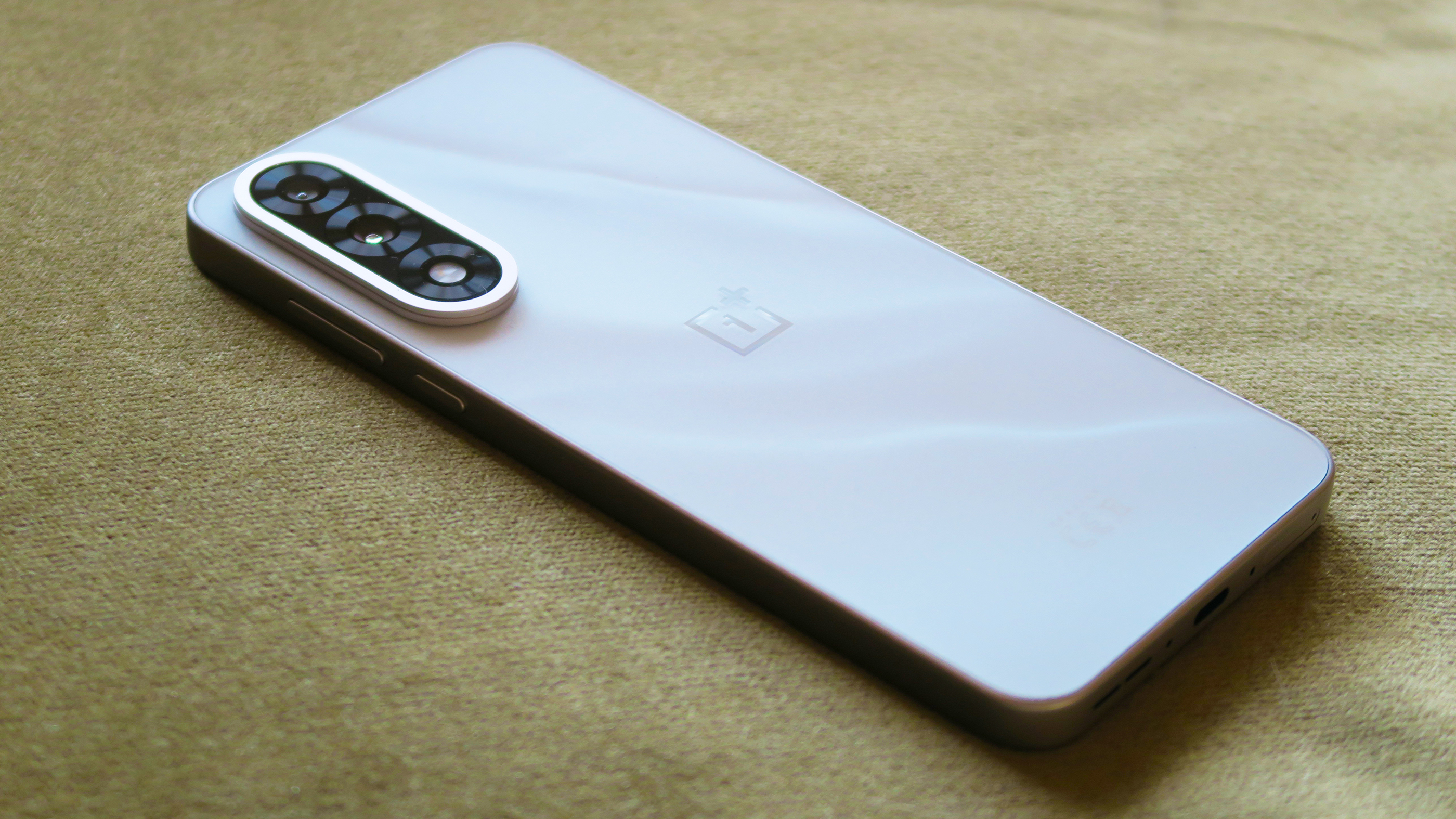
Pros
- Attractive design
- Rich, elegant user experience
- Big screen with fast refresh rate
- Fast charging
Cons
- Some downgrades vs predecessor
- Rivals offer better value performance
- Not available in the US
For many people, the Nord 5 will be an underwhelming update. OnePlus has ditched the metal unibody design from the Nord 4, while battery capacity and charging speeds have both been reduced, meaning the Nord 5 is nowhere near as good a value as its predecessor.
However, there’s no denying it’s still a very strong mid-range phone. The new design looks good and arguably has more mainstream appeal, while the 6.83-inch AMOLED display is one of the best around. And while the battery life and charging speeds have been downgraded, both are still impressive at this price point.
OnePlus also continues to excel in the software department, with its intuitive OxygenOS Android skin now full of AI, including some genuinely thoughtful features. Four years of OS upgrades is around average, though the six years of security patches are excellent.
It’s definitely still worth considering, but as you can see from this article, there are other mid-range phones that we’d recommend looking at first.
Who should buy the OnePlus Nord 5?
Anyone who enjoys OnePlus’ software experience, values thoughtful AI features and loves a big, bright display.
OnePlus Nord 5: Further considerations
Look elsewhere if you want top-tier cameras or a genuinely unique design.
Read our full OnePlus Nord 5 review
10. Nubia Redmagic 10s Pro – Best for Gaming
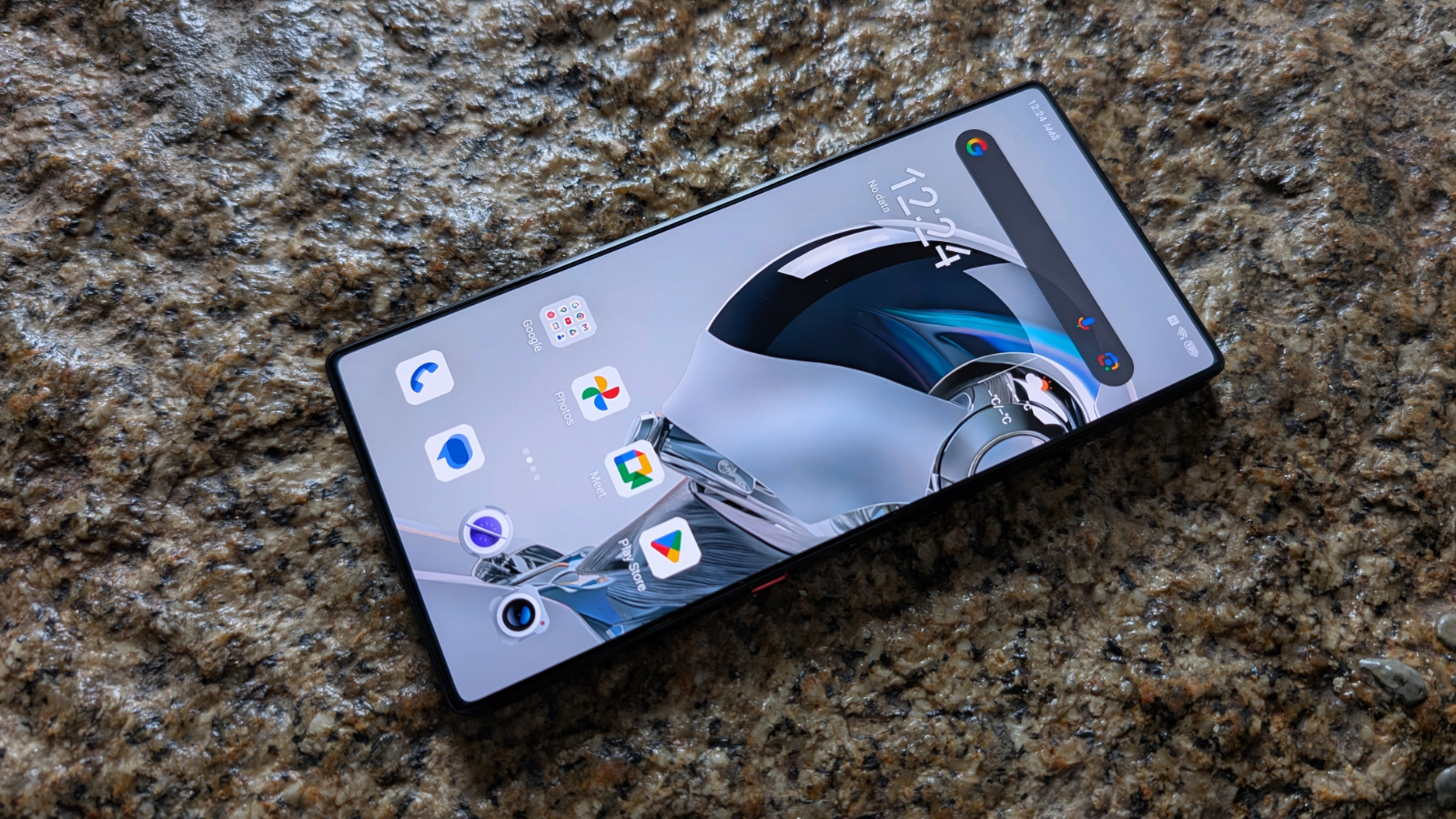
Pros
- Excellent performance
- Upgraded cooling system
- Great battery life
- Dedicated gaming features
Cons
- Some bloatware
- Only three years of software support
- Terrible selfie camera
The Redmagic 10S Pro is a contender for the best gaming phone outright, making it remarkable that it’s priced as a mid-range phone.
Nubia is going head-to-head with the more expensive Asus ROG Phone 9 and 9 Pro here, yet the Redmagic fares well. Performance from the upgraded Snapdragon 8 Elite Leading Version chipset is its key strength, offering superb gaming performance in combination with the built-in fan and advanced cooling system.
Nubia’s ‘Game Space’ software mode offers useful gaming tweaks and customisation, while the large 6.85-inch display and premium design make it a joy to use. And with a 7050mAh battery and 80W fast charging (with the charger included in the box), the battery life/charging combo is one of the best around.
The 10S Pro’s main weaknesses appear when you try to use it as a regular phone, with a poor under-display selfie camera and hit-and-miss software. Nubia also only guarantees three years of software updates, which is behind the competition.
Nonetheless, the Redmagic 10S Pro provides a near-complete mobile gaming experience at an impressively low price.
Who should buy the Nubia Redmagic 10S Pro?
Anyone who wants a no-compromise gaming experience on a mid-range phone.
Nubia Redmagic 10S Pro: Further considerations
Look elsewhere if you need great everyday software or high-quality cameras – especially the selfie lens.
Read our full Redmagic 10S Pro review
Other mid-range phones tested
At Tech Advisor, we review dozens of mid-range phones each and every year, but this article only highlights the 10 that are best for most people.
It means we’ve had to exclude lots of very good handsets that are still worth considering. Examples include the Nothing Phone (3a) Pro, Samsung Galaxy A36, Honor 400 Pro, Xiaomi 15T and Oppo Reno 13 Pro.
We wanted to specifically highlight the Fairphone 6, which is undoubtedly the best phone you can buy if sustainability is your top priority. However, as far as pure specs go, it’s a step behind the top 10 above.
It’s also worth reiterating why there’s no iPhone in the top 10. Apple makes several great smartphones, but only the iPhone 16e is cheap enough to be included here, and we found it to be underwhelming. If you want a brand-new phone, then Android is the better choice here, or you could look for a mid-range price on the iPhone 16, now it’s the previous generation.
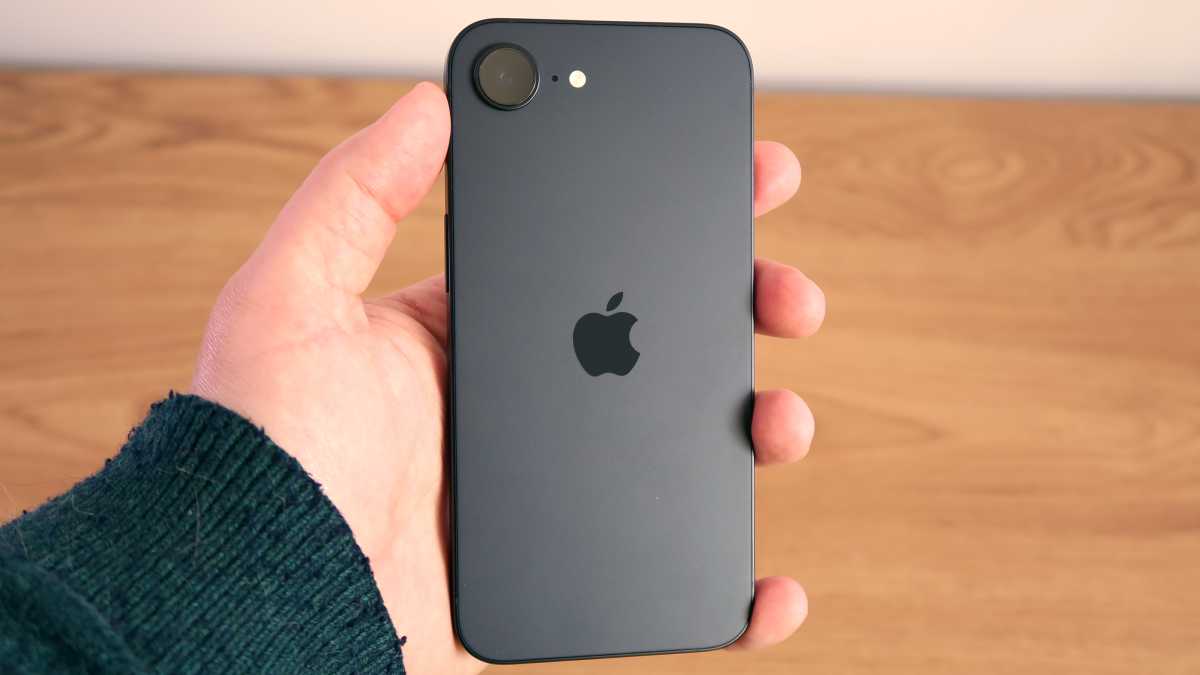
Foundry | Alex Walker-Todd
Mid-range phone news that could affect your buying decision
With the vast majority of phones typically replaced with a newer model every 12 months, and many contracts today lasting 24-36 months, deciding whether to buy now or wait for the next generation is always a tough decision. Ultimately, it is a personal choice that is going to be affected by what you can afford and when, but it’s good to know you’re not going to regret your decision almost immediately.
However, there are no devices on the horizon that would make buying one of the options above feel outdated. The OnePlus 15R (the number 4 is considered unlucky in its native China) is probably the next one you’ll want to seriously consider, but it’s unlikely to be available globally before January.
The likes of the Google Pixel 10a, Nothing Phone (4a) series and Samsung Galaxy A57 are all likely to be many months away.
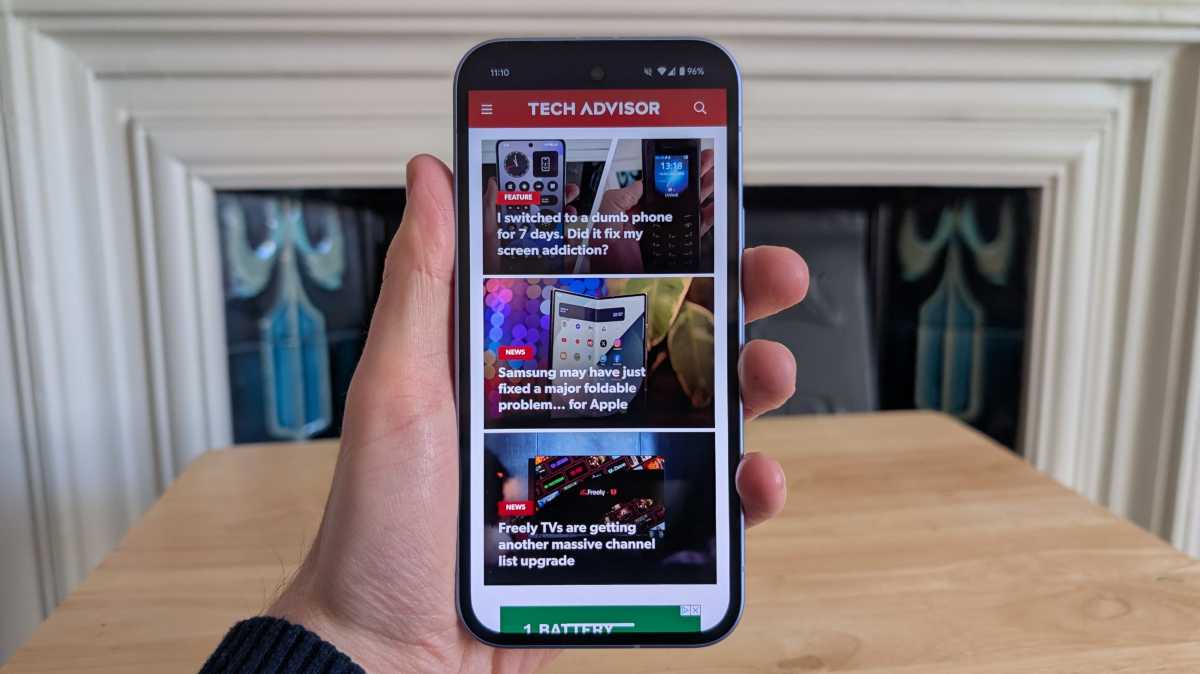
Anyron Copeman / Foundry
Can I get a better phone deal?
The prices displayed in our list of the best phones are updated daily, making sure you always see the top phone deals. Our recommendations are based on design, performance and typical value, among other things, but with retailer and mobile operator prices changing daily, we cannot factor in deals in the same way.
Remember that a great deal could make a phone that appears lower down this list more attractive than one that sits at the top.
Good times to find a phone deal include Amazon Prime Day, with a spin-off known as ‘Prime Big Deal Days’ taking place on 7-8 October, and around Black Friday, which is happening on 28 November this year. Keep an eye on the January sales, too, as well as other sales around specific holidays such as Easter.
Another way to get a great deal is to consider buying a refurbished phone. Not only will you get it cheaper, but it’s also more eco-friendly. We have a regularly updated round-up of the best refurbished phone deals you should check out.
How we test mid-range phones
Like any smartphone, the true test of a mid-range phone is in regular, everyday usage. So, that’s exactly what we do.
For every mid-range phone we review, we put our personal SIM in it (or set up an eSIM) and use it as our main device for at least a week, often much longer.
This length of time allows for insights that just aren’t possible in a few days, such as camera testing in a range of different environments and long-term battery life impressions. To enable comparisons, we also run a specific set of benchmarks on every mid-range phone, but don’t rely on these to draw any significant conclusions.
Read more about how we test smartphones.
Why you should trust Tech Advisor for mid-range phone reviews and buying advice
Tech Advisor has been covering mid-range smartphones ever since the category was defined following the original iPhone’s release in 2007 and Android’s arrival a year later. In the nearly two decades since, we’ve tested phones from every mid-range phone maker you can think of, including Apple, Samsung, Google, OnePlus, Motorola, Nothing, Xiaomi, Honor and many more.
They continue to form a core part of our coverage, offering an attractive middle ground between low-cost budget phones and high-end flagship handsets. We review new mid-range phones every month, drawing on the many decades of combined experience from an expert in-house team and trusted contributors.
Who curated this article?
Our full-time Mobile Editor, Anyron, is the lead on this list of the best mid-range phones. He spends almost all his time testing, reviewing and writing about phones and is often among the first in the world to get hold of the latest models. Our Reviews Editor, Chris, who has been testing phones for 15 years, provides assistance.
How to choose the best mid-range phone
When choosing a mid-range phone, you should consider these things: build quality and design, display, performance, cameras, battery life, software and value for money.
At Tech Advisor, we define a mid-range phone as costing between £300/$300 and £700/$700 when bought outright, though contract prices will vary significantly depending on availability, the network you choose and how much data you need.
If you have limited money to spend, we’d suggest looking at our best budget phone round-up first. And only return here if you don’t find something that suits your needs.
Buying a phone outright will usually give you the best value, but we appreciate that finances in the real world don’t always accommodate such big one-off purchases. If you can afford to buy the phone outright, you’ll obviously also need to factor in the cost of the plan.
FAQ
What is the best mid-range phone?
This will vary depending on your needs, but the Google Pixel 9a is the best mid-range phone for most people. It combines premium hardware, including an excellent main rear camera, with a slick software experience and a class-leading seven years of updates.
What is the best cheap mid-range phone?
The best cheap mid-range phone for most people is the Nothing Phone (3a). It offers a compelling blend of unique design, highly customisable software and great battery life, all for an impressively low price.
What does mid-range mean in phones?
There’s no technical definition, but at Tech Advisor, we define mid-range phones based on price: anything that costs more than £300/$300 but less than £700/$700 if you buy it SIM-free.
Anything cheaper than that is a budget phone, while anything more expensive is a flagship handset.
What is the best mid-range iPhone?
Apple currently only sells one mid-range iPhone – the iPhone 16e. However, hardware limitations make it hard to recommend unless you have to have a new iPhone.
For most people, we’d suggest looking at previous-gen flagship models such as those from the iPhone 14 or 15 series, which are available at mid-range prices. Opting for a used or refurbished phone can also reduce prices significantly, as well as being more eco-friendly.
What is the best mid-range Samsung phone?
Currently, the best mid-range Samsung phone is the Galaxy A56. It offers a thin and light design, an impressive software experience (including plenty of AI features) and long software support, making it a strong contender.
Why are some mid-range phones not available in the US?
If you’re based in the US, you’ll notice that not all of the best mid-range phones are available. Unfortunately, that’s because many of the biggest Chinese phone manufacturers simply don’t sell their products in the US.
Chinese phones are a great choice in the mid-range market because they regularly balance very good specifications with a lower price than you’d expect. The likes of Xiaomi, Poco and Oppo often offer excellent value, but for anyone in the US, they’ll be import-only, so make sure they support your carrier if you can find them via the likes of Amazon.
How much RAM is good for a mid-range phone?
That depends on what you plan to use it for, but we’d recommend 8GB as a minimum. Assuming the chipset is capable enough (we’ll indicate in full reviews whether that’s the case), this will allow you to perform all everyday tasks without running into any issues.
However, if you want to use your phone for more demanding tasks such as gaming, we’d recommend 12GB or more. Many of the most powerful phones on the market have 16GB of RAM.
Related content
- Phone reviews
- Phone news
- Best mid-range phones
- Best budget phones
- Best basic phones
- Best Google Pixel phones
- Best Samsung Galaxy phones
- Best Motorola phones
- Best Xiaomi phones
- Best OnePlus phones
- Best Oppo phones
- Best Honor phones
- Best foldable phones
- Best battery life phones
- Best camera phones
- Best dual-SIM phones
- Best gaming phones





